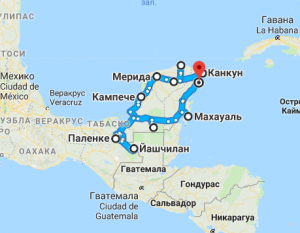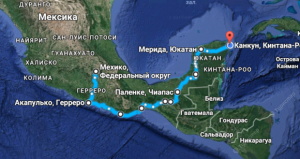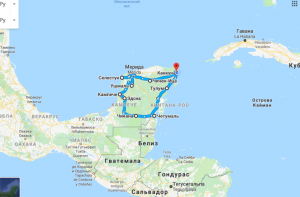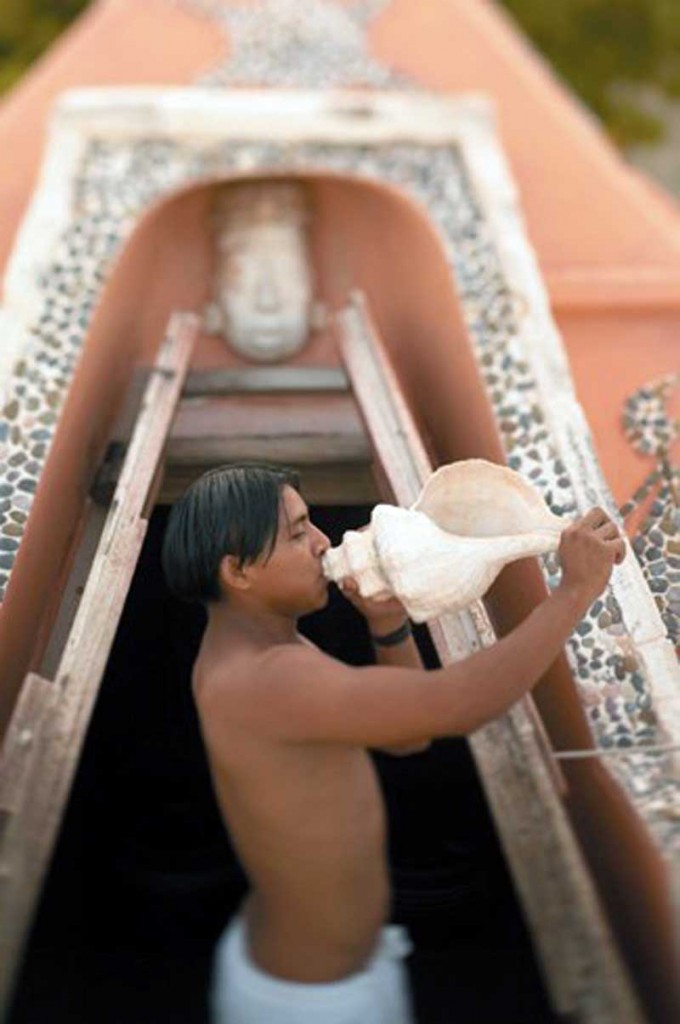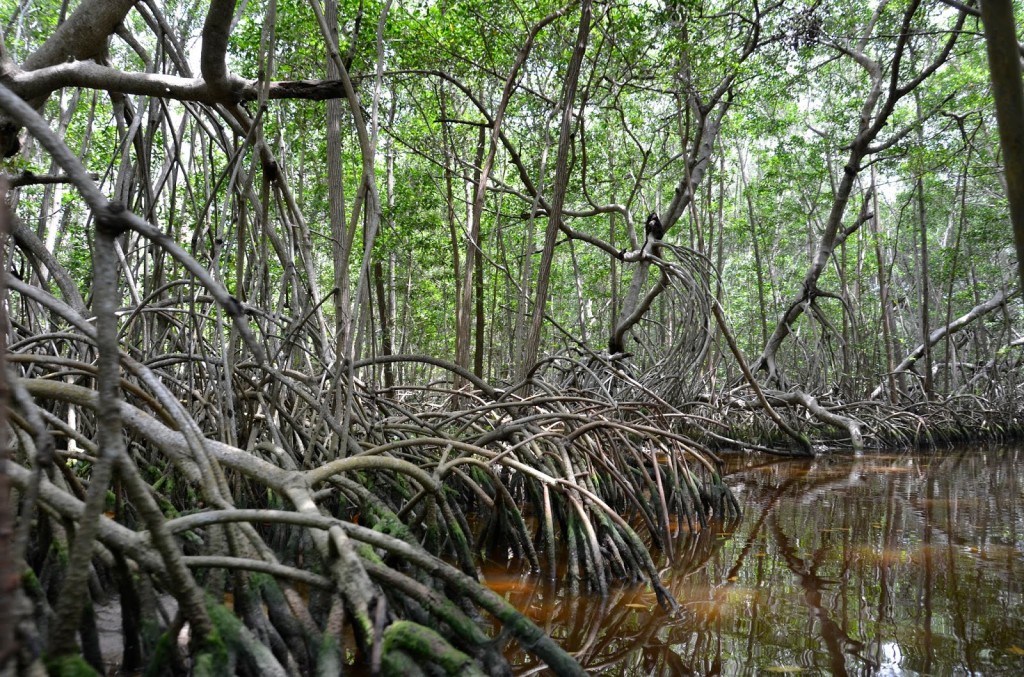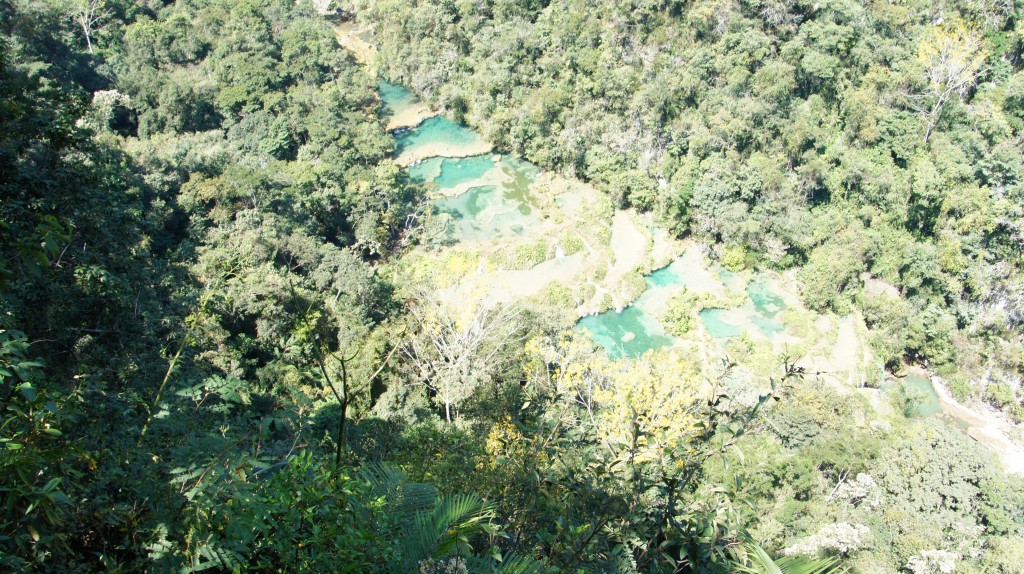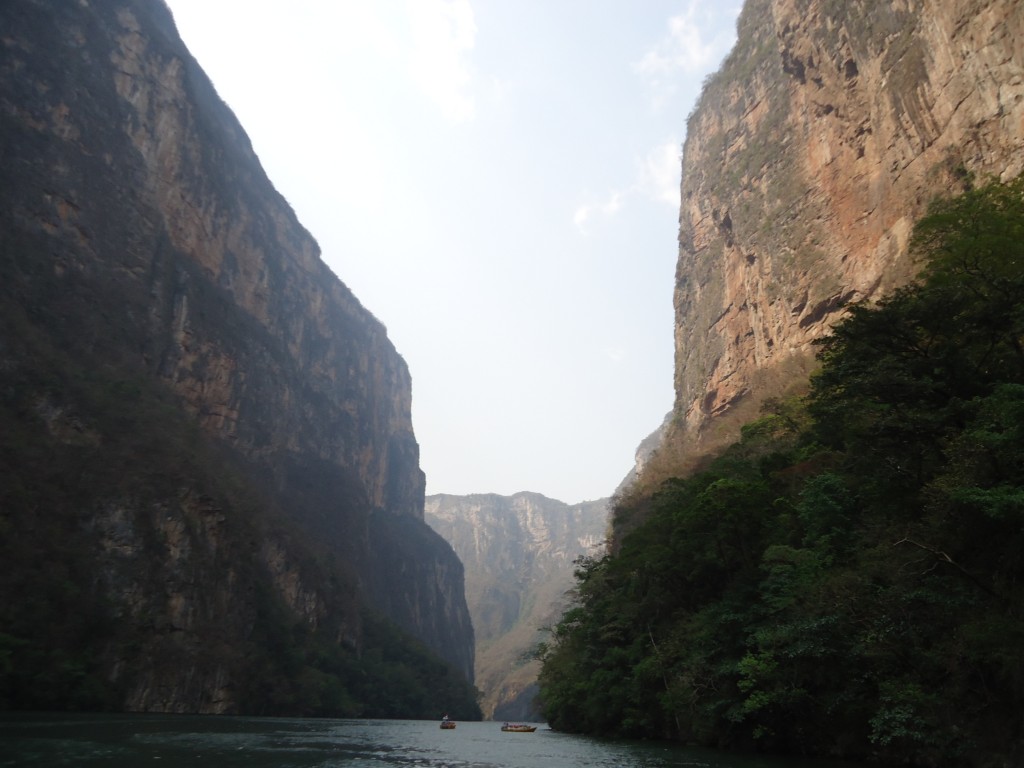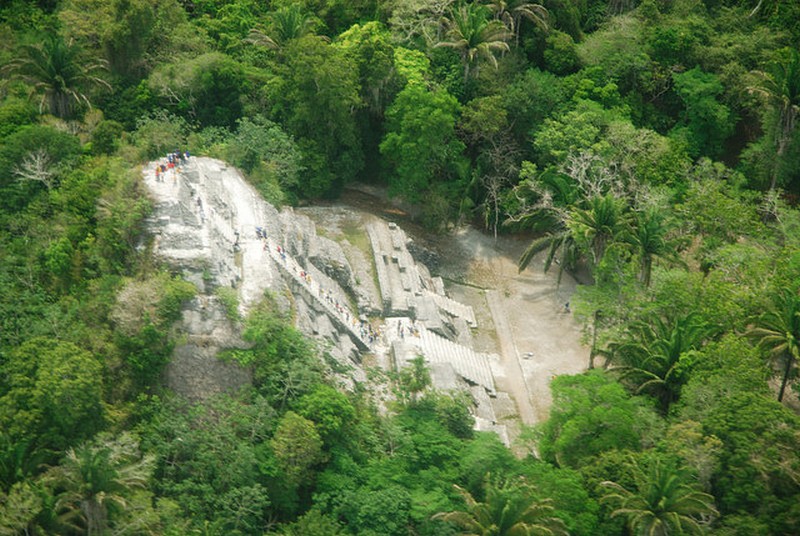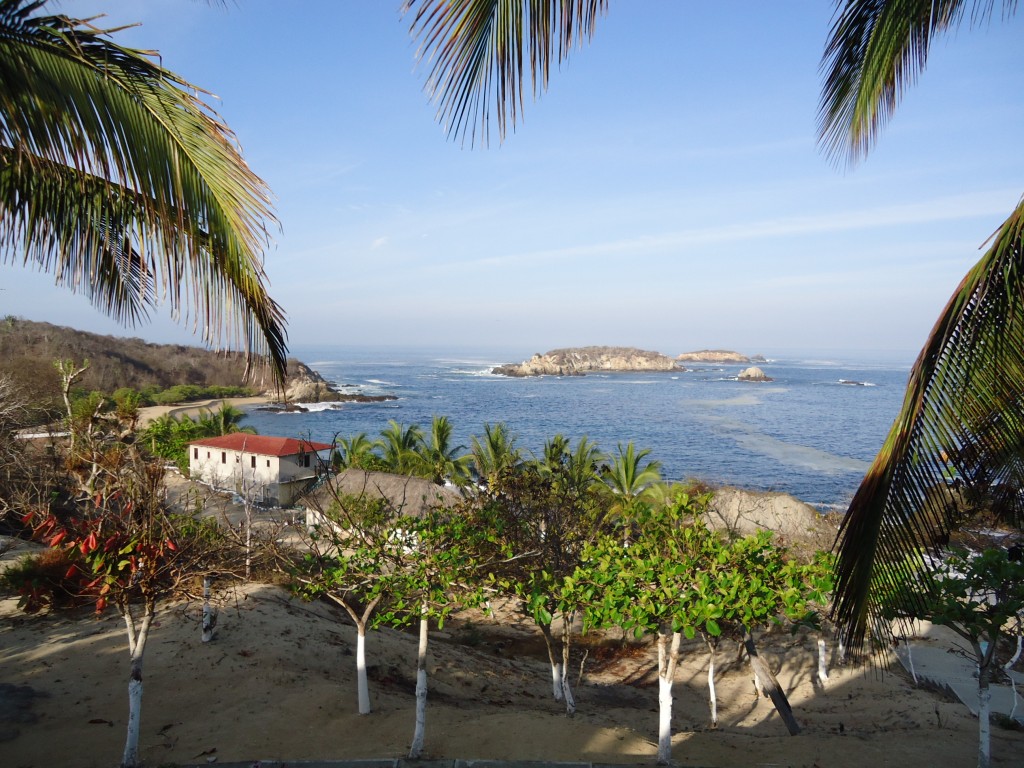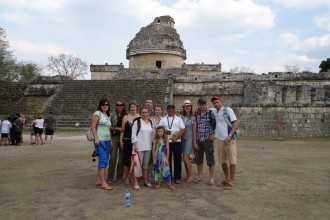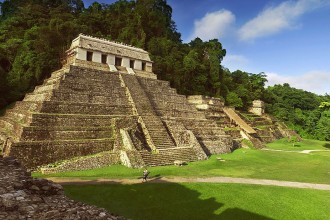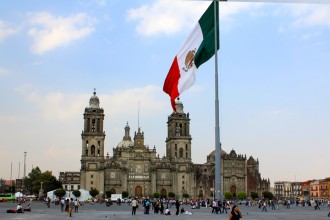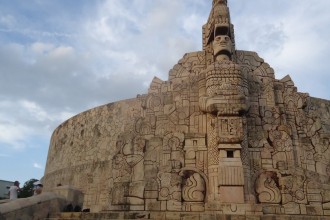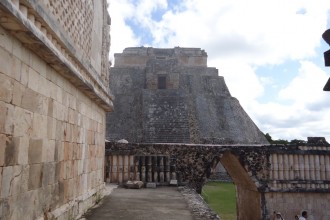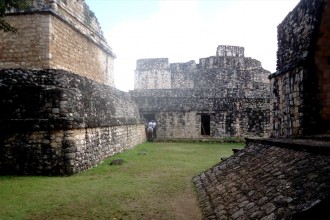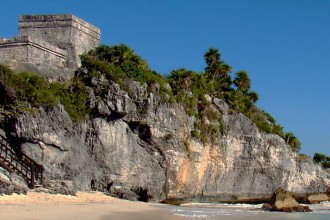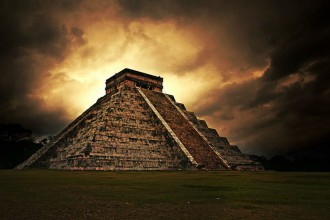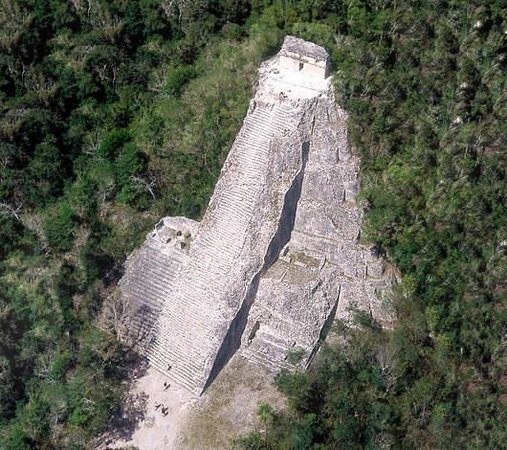Start: 8:00, 28 October, Mexico City
Finish: 20:00, 7 November, Cancun.
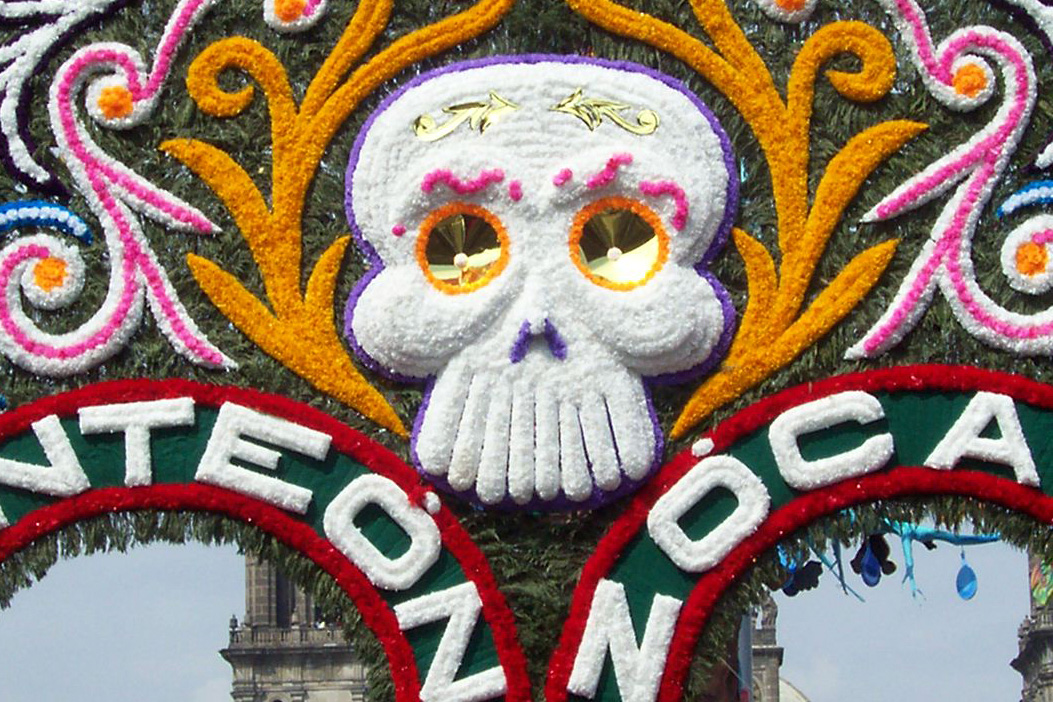
Duration: 2,700 km, 11 days.
The thread of the route: Mexico City - Teotihuacan - Puebla - Taxco - Oaxaca - Monte Alban - Tehuantepec - Canyon Del Sumidero - San Cristobal de las Casas - Palenque - Merida - Chichen Itza - Cancun
The price of participation: $1,900 - A place in the car, fuel, double occupancy in hotels category 4*, tour guides and tour leader.
Additional payments: the power for the entire route, entrance fees to museums and archaeological sites - about $500 + flights.
Trasnport: Ford Expedition Max, Chevrolet Suburban.
We shall see:
- The central part of Mexico City, Anthropological Museum, Zocalo Square
- The ancient city of Teotihuacan
- The colonial city of Puebla
- Serebryanыe Rudnicki Taxco
- Day of the Dead in Oaxaca
- The ancient city of Monte Alban
- Most MoreAbout tree in the world, Santa Maria del Tula
- Canyon Del Sumidero
- The colonial city of San Cristobal de las Casas
- The ancient capital of the Maya - Palenque with a tomb of King Pakal
- The colonial city of Merida
- Chichen Icu
Itinerary:
27 October. The total collection of the group at the bar on the Zocalo in Mexico City (participate in the meeting - optional). If you arrive in Mexico City on the eve of, you can get from the airport to your hotel by taxi. Let us know, if you need help. Briefing on the whole journey.
28 October. In the morning - the National Museum of Anthropology. There is a rich collection of archaeological and anthropological exhibits of pre-Columbian era, found in Mexico. Overview lecture on the history of Mesoamerica. After lunch - visiting the historic city center - Zocalo, Inspection of the main Catholic cathedral of Mexico and the Presidential Palace.
29 October. Departure from Mexico City, Transfer to the archaeological complex of Teotihuacan. During 8 ages this place was religious, political and economic capital of Mesoamerica. According to legend, the Aztecs, at Teotihuacan were born all the arts, wisdom, knowledge, the gods and the belief in them. Here we will spend about 4 hours. Next - move to Puebla (in a way - 2 o'clock). Evening walk on Puebla. Tasting the local cuisine. The history of the city is represented by food. Culinary Traditions, based on local products - corn, Tikva, tomatoes and chocolate - for centuries been exposed to Spanish, French and other European cuisines.
30 October. In the morning - transfer to Taxco (in a way - 3 o'clock). The main theme of the city - Silver. Around are many mines on extraction of metal. Local jewelers offer a variety of silverware. We will spend the whole day in Taxco.
31 October. Early in the morning departure to Oaxaku (in a way - about 6 hours). Arrival in Oaxaca about 15:00. Walking through the city, mezcal wine and local cuisine.
1 November. Celebrate Day of the Dead in Oaxaca. Master-class on making masks - an indispensable attribute of holiday. Experts will show and tell how to make masks, they mean and how they can be used subsequently. A visit to the market and buy everything you need for, to make your own altar in memory of our departed loved ones.
2 November. Parade of the Dead. The holiday is accompanied by music, costumes and, certainly mescal: alcoholic beverages, which is produced in the region of Mexico. In the evening, we visit the local market. Finished the day a ceremonial dinner, dedicated to the dead.
3 November. In the morning we go to Monte Alban (about 45 minutes) - The ancient city of Zapotec, located on the top of the mountain Jaguar, with a panoramic view of the valley of Oaxaca. Among the buildings of the zone stands Wall Dancers, which depicts the figure of dancing people. Continuation of the journey and visit the colonial town of Santa Maria del Tula. Here is the most famous tree in Mexico: his age - 2000 years. The girth of the tree 40 m and is the largest tree in the world. In the shade of a tree can fit about 500 man, and, to hug him, require at least 30 wishing. After that, on the mountain roads of Oaxaca, passing by fields of agave moving to the city of Tehuantepec (Hill jaguar), located on the isthmus between the Gulf of Mexico and the Pacific Ocean.
4 November. Moving to the Canyon del Sumidero. Here we sit in a boat and take a short trip along the canyon. Stunning views of the canyon, walls in some places on the rise 1000 meters, impressive rocky geological formations. The culmination of the trip comes at the moment when the boat from a narrow gorge in the sun-drenched valley. Continuation of the journey and arrival in San Cristobal de las Casas - one of the most beautiful colonial cities of Mexico.
5 November. In the morning - departure to Palenque. The road in this part of Mexico is not very, so the distance 250 km, we will overcome some 6 hours. On the way - stop in the jungle by the waterfall Agua Azul. Here you can swim. By prior arrangement the night tour to Palenque.
6 November. A visit to the ancient city of Palenque. Here are preserved buildings, It is a monument of ancient art: tomb, Temple of the Sun and the Temple of the Cross, Temple of Inscriptions with the tomb of the king Pakal, Palace and other buildings. Transfer to Merida (in a way - about 7 hours). On the way, we stop for lunch in the fishing village Champoton, near Campeche. Here you can try 25 various dishes from shrimp. Arrival in the capital of Yucatan - Merida. The city was founded by Spanish conquistador Francisco de Montejo in 1542 year in the ruins of a great Mayan settlement. Evening walk in the old part of town.
7 November. Departure to Chichen Itza - the most famous archaeological site of the Maya. Pyramid Kukulykan, Observatory and the largest in Mesoamerica playground for ball games. After Chichen Itza Zayed swim in Cenote Ik-Kil. Final drive to Cancun (about 4 hours).
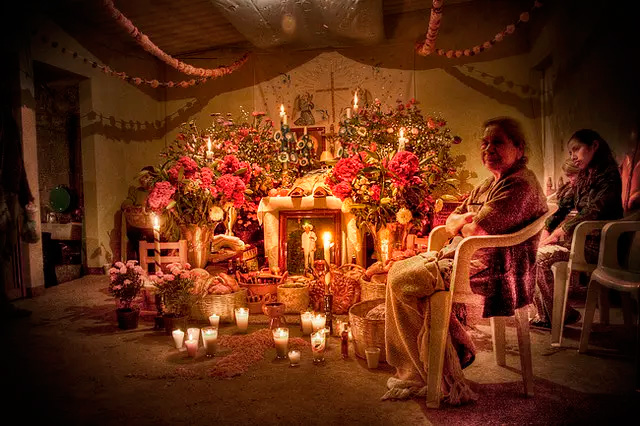
Day of the Dead Oaxaku by elgatoenlaluna. Attribution-NoDerivs 3.0 Unported (CC BY-ND 3.0)
Day of the Dead - a holiday, dedicated to the memory of the dead, held annually 1 and 2 November in Mexico. According to legend, these days the souls of dead relatives visited his home. The tradition dates back to the Mayan and Aztec, who brought gifts to the goddess Mictecacihuatl and constructed a wall depicting skulls - tsompantli.
Traditions, connected with the holiday include the establishment of private altars in honor of the late, including a skull made of sugar, Verbena, favorite foods and beverages of the deceased, and visiting graves with these gifts. Vividly Day of the Dead is celebrated in Oaxaca, in accordance with the centuries-old tradition of glorifying the departed .
The celebration is accompanied by the preparation for the arrival of the spirits of the dead: markets selling everything you need to decorate the altars, preparation of traditional food and the food itself, which by its scent attracts spirits to their native home. It is believed, after a long transition from the realm of the dead to the ground, Spirits come tired and hungry, therefore altars constructed as a place, where they can enjoy their favorite food, beverages, and always in the district in their honor the music.
B 2003 year's festival was included in the UNESCO List of the Intangible Cultural Heritage of Humanity.
Tule Tree - known for, that has the thick trunk of any tree in the world. Located in Oaxaca, Mexico. The circumference of the barrel 36,2 meters and a diameter 11,62 m. Initially, due to the thickness of the wood was considered, it's a couple of different trees, but then the DNA tests confirmed, that it's still a single tree.
[5] ; Nonetheless, the hypothesis of several trunks of wood it does not rule out opening[6]. Age tree is unknown and, According to various estimates, from 1200 pax 3000 years, and one of the hypotheses - about 6000 years[7]; often referred to as the age 1433 - 1600 years[8]. According to the Zapotec legend, tree was planted around 1400 years ago, a priest Ehekatlya, the god of the wind, broadly in line with and views of historians, as the tree grows on the former holy place Indians, then departed to the Catholic Church. The tree has an unofficial nickname "tree of life" because of the images of different animals, which allegedly can be distinguished on its trunk. B 1990 it has been assumed that, the tree is slowly dying due to lack of water, environmental pollution and increasing traffic flow near the tree[9].Tule Tree - known for, that has the thick trunk of any tree in the world. Located in Oaxaca, Mexico. The circumference of the barrel 36,2 meters and a diameter 11,62 m. Initially, due to the thickness of the wood was considered, it's a couple of different trees, but then the DNA tests confirmed, that it's still a single tree. We will see this in November 2015 ― https://www.facebook.com/events/895381700513093

